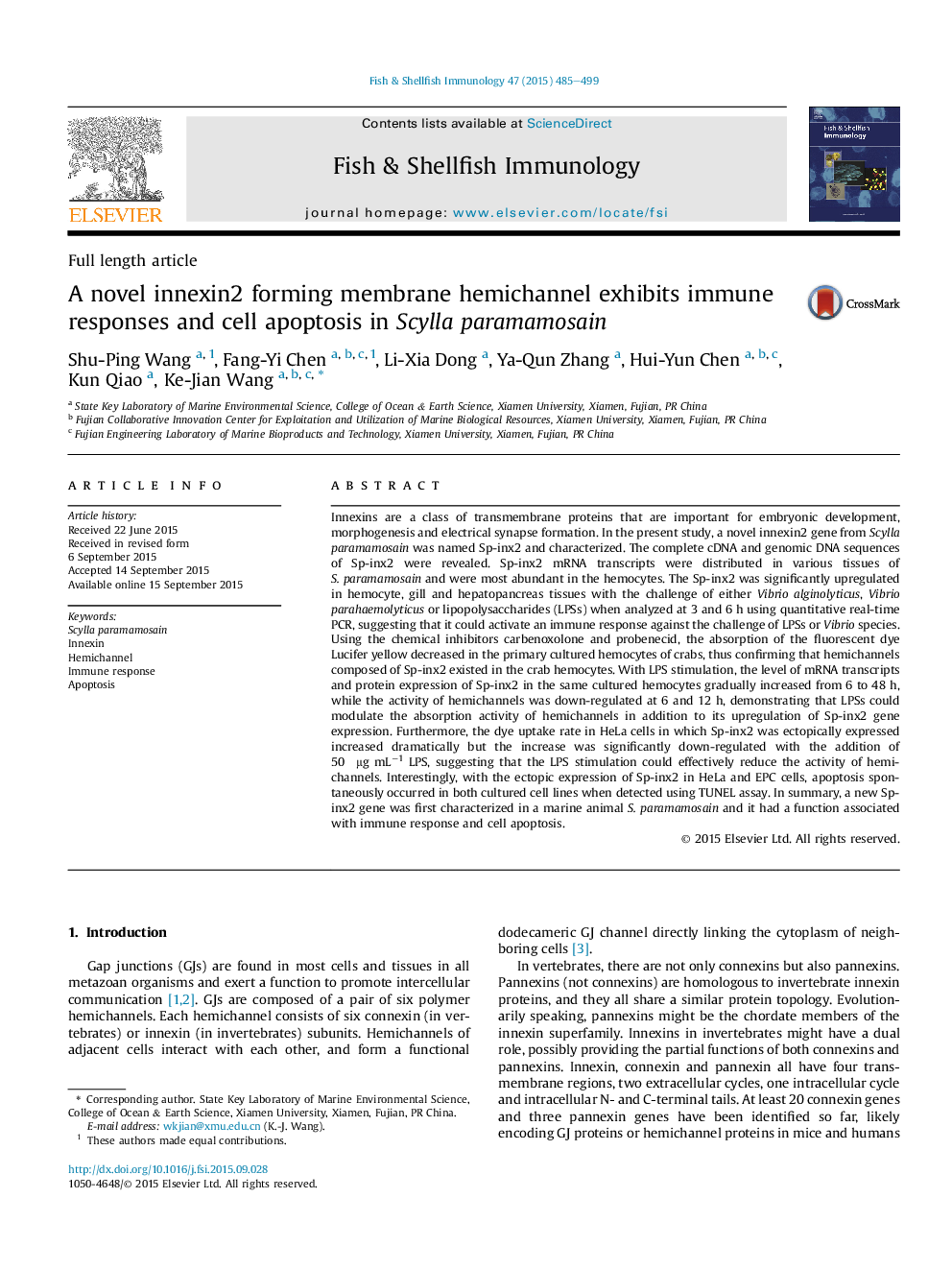| Article ID | Journal | Published Year | Pages | File Type |
|---|---|---|---|---|
| 2431113 | Fish & Shellfish Immunology | 2015 | 15 Pages |
•A novel innexin2 gene was identified in Scylla paramamosain.•Hemichannels composed of Sp-inx 2 existed in crab hemocytes.•Sp-inx2 showed immune response against the challenge of LPS and Vibrios.•LPS can modulate the absorption activity of hemichannels.•Sp-inx2 that highly expressed in HeLa and EPC cells promoted apoptosis of both cells.
Innexins are a class of transmembrane proteins that are important for embryonic development, morphogenesis and electrical synapse formation. In the present study, a novel innexin2 gene from Scylla paramamosain was named Sp-inx2 and characterized. The complete cDNA and genomic DNA sequences of Sp-inx2 were revealed. Sp-inx2 mRNA transcripts were distributed in various tissues of S. paramamosain and were most abundant in the hemocytes. The Sp-inx2 was significantly upregulated in hemocyte, gill and hepatopancreas tissues with the challenge of either Vibrio alginolyticus, Vibrio parahaemolyticus or lipopolysaccharides (LPSs) when analyzed at 3 and 6 h using quantitative real-time PCR, suggesting that it could activate an immune response against the challenge of LPSs or Vibrio species. Using the chemical inhibitors carbenoxolone and probenecid, the absorption of the fluorescent dye Lucifer yellow decreased in the primary cultured hemocytes of crabs, thus confirming that hemichannels composed of Sp-inx2 existed in the crab hemocytes. With LPS stimulation, the level of mRNA transcripts and protein expression of Sp-inx2 in the same cultured hemocytes gradually increased from 6 to 48 h, while the activity of hemichannels was down-regulated at 6 and 12 h, demonstrating that LPSs could modulate the absorption activity of hemichannels in addition to its upregulation of Sp-inx2 gene expression. Furthermore, the dye uptake rate in HeLa cells in which Sp-inx2 was ectopically expressed increased dramatically but the increase was significantly down-regulated with the addition of 50 μg mL−1 LPS, suggesting that the LPS stimulation could effectively reduce the activity of hemichannels. Interestingly, with the ectopic expression of Sp-inx2 in HeLa and EPC cells, apoptosis spontaneously occurred in both cultured cell lines when detected using TUNEL assay. In summary, a new Sp-inx2 gene was first characterized in a marine animal S. paramamosain and it had a function associated with immune response and cell apoptosis.
